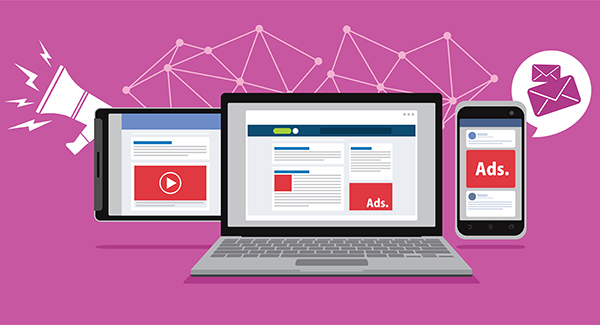Recruiting: The middle of the funnel – who’s responsible?
 If you’re in B-school admissions or marketing, you’re familiar with the common push-pull of who’s responsible for filling your next class.
If you’re in B-school admissions or marketing, you’re familiar with the common push-pull of who’s responsible for filling your next class.
Hey, we’re all on the same team, right? Then why does it sometimes feel divisive when it’s time to assign accountability for a waning class size, or take credit for an overflowing classroom on day 1? Let’s talk about where the most important action happens – the middle of the funnel.
Admissions Team
You’ve collaborated with marketing on a strategy to bring leads into the top of the funnel. You’ve stated your goals, approved a plan, and you’re gaining traction. Your pool of leads may be growing and your admissions events have attendees. You’re ready for them to apply – NOW! After all, they showed up, called you or filled out a form – they must be interested right? Here’s where the questions begin:
- If we spent money to bring them in and they’re not applying, are they the right leads?
- Did marketing lead us astray on strategy? Should they be doing more emails/advertising/InMails/billboards/radio? (Fear not, marketing folk, we’ll get to you.)
- Is our database stale?
- Is the competition eating our lunch?
All of these things (and more) are possible, however, consider asking these questions about your prospects, instead:
- What barriers do they have and how can I address them?
- How could I get them to interact with my school, either on-campus or online?
- Could I connect with them (beyond email) in a meaningful way?
- Could I collaborate with my team or my agency to develop a calling campaign, email campaign, mailing or webinar series to engage those that have been stagnant?
- Is there any content I could share with them that would be interesting and compelling, i.e. video or a professor’s recent book?
The goal here is to focus less on “what went wrong” prematurely and more on how you can help your prospects make a decision. With a different approach, you may be surprised at how much action you can spur, pulling them through the murky waters of the middle funnel and down to the bottom where you’re ready for them.
Marketing Team
You’ve done your job. You’ve developed a marketing strategy, your advertising is filling admissions events, you’re tracking activity on your dashboard, and you’re seeing an uptick in YOY leads. So why are applications down? Here’s where the questions begin:
- How is admissions following up with the leads I generated for them?
- What is happening at admissions events if no one is applying?
- Do I need to ask for more advertising budget?
- What is the competition doing that we’re not?
All of these things (and more) are valid, however, consider asking these questions about your prospects, instead:
- What barriers do they have and how can I address them?
- How could I get them to interact with my school, either on-campus or online?
- Could I connect with them (beyond email) in a meaningful way?
- Could I collaborate with my team or my agency to develop a calling campaign, email campaign, mailing or webinar series to engage those that have been stagnant?
- Is there any content I could share with them that would be interesting and compelling, i.e. video or a professor’s recent book?
So, you see, the second set of questions is the same for both teams, implying the need for a paradigm shift in how you think about the middle funnel. If you can collaborate and share the responsibility, you can also share the victory.
Find out more about how to engage prospects in the middle of the funnel with digital marketing or contact center solutions. Contact GPRS.

 It’s been a year, or two, or 5. Are they still considering continuing their education, did they already complete another program or did they give up the dream?
It’s been a year, or two, or 5. Are they still considering continuing their education, did they already complete another program or did they give up the dream? Depending on who you talk to — marketing, admissions, administrators, faculty — these may be the most important people in your funnel and the ones that deserve the highest dollar investment. If your leads are qualified, engaged and ripe for the opportunity at hand (your degree program), they will be much more likely to turn into prospects and seated students. Sounds obvious, right? Then why are there so many temptations to shortcut the lead generation process?
Depending on who you talk to — marketing, admissions, administrators, faculty — these may be the most important people in your funnel and the ones that deserve the highest dollar investment. If your leads are qualified, engaged and ripe for the opportunity at hand (your degree program), they will be much more likely to turn into prospects and seated students. Sounds obvious, right? Then why are there so many temptations to shortcut the lead generation process? It’s crunch time. You’re finishing your final round of admissions events for the year. Your class is starting to round itself out, but you’ve still got those final seats to fill. You’re looking at each and every lead in your funnel, trying to predict which ones will take action.
It’s crunch time. You’re finishing your final round of admissions events for the year. Your class is starting to round itself out, but you’ve still got those final seats to fill. You’re looking at each and every lead in your funnel, trying to predict which ones will take action. An awareness campaign lives at the very top of the funnel. They are the simplest campaigns to deploy. A potential lead has never heard of your program. They may be considering going back to school to further their career but don’t know yet which college they’d like to attend. They may be researching through Google when they come across your awareness ad.
An awareness campaign lives at the very top of the funnel. They are the simplest campaigns to deploy. A potential lead has never heard of your program. They may be considering going back to school to further their career but don’t know yet which college they’d like to attend. They may be researching through Google when they come across your awareness ad. SEO and SEM are two very different animals, but they can be finessed into working harmoniously together. In order to create a complete and comprehensive graduate program marketing strategy, it’s best to apply them both holistically.
SEO and SEM are two very different animals, but they can be finessed into working harmoniously together. In order to create a complete and comprehensive graduate program marketing strategy, it’s best to apply them both holistically. The equation is simple:
The equation is simple: The decision-making process for a prospect to enroll in an Executive MBA program is painfully long. Statistics show that this process can take up to two years. So what can you do to speed up the process? Develop — and implement — a pull-through digital enrollment marketing strategy.
The decision-making process for a prospect to enroll in an Executive MBA program is painfully long. Statistics show that this process can take up to two years. So what can you do to speed up the process? Develop — and implement — a pull-through digital enrollment marketing strategy. Do you feel like you are constantly paying for digital marketing and garnering little results? Most programs are unsatisfied with their Return On Investment (ROI), but when they try to fix it, they don’t know where to start. What most programs don’t know is that it’s likely your marketing plan that’s to blame. But it isn’t the plan itself that’s the problem, it’s that you’re not following it consistently. The majority of marketing plans fail due to inconsistent posting, overextending platform use, and reactionary responses.
Do you feel like you are constantly paying for digital marketing and garnering little results? Most programs are unsatisfied with their Return On Investment (ROI), but when they try to fix it, they don’t know where to start. What most programs don’t know is that it’s likely your marketing plan that’s to blame. But it isn’t the plan itself that’s the problem, it’s that you’re not following it consistently. The majority of marketing plans fail due to inconsistent posting, overextending platform use, and reactionary responses. Many words come to mind when describing an Executive MBA program:
Many words come to mind when describing an Executive MBA program:
